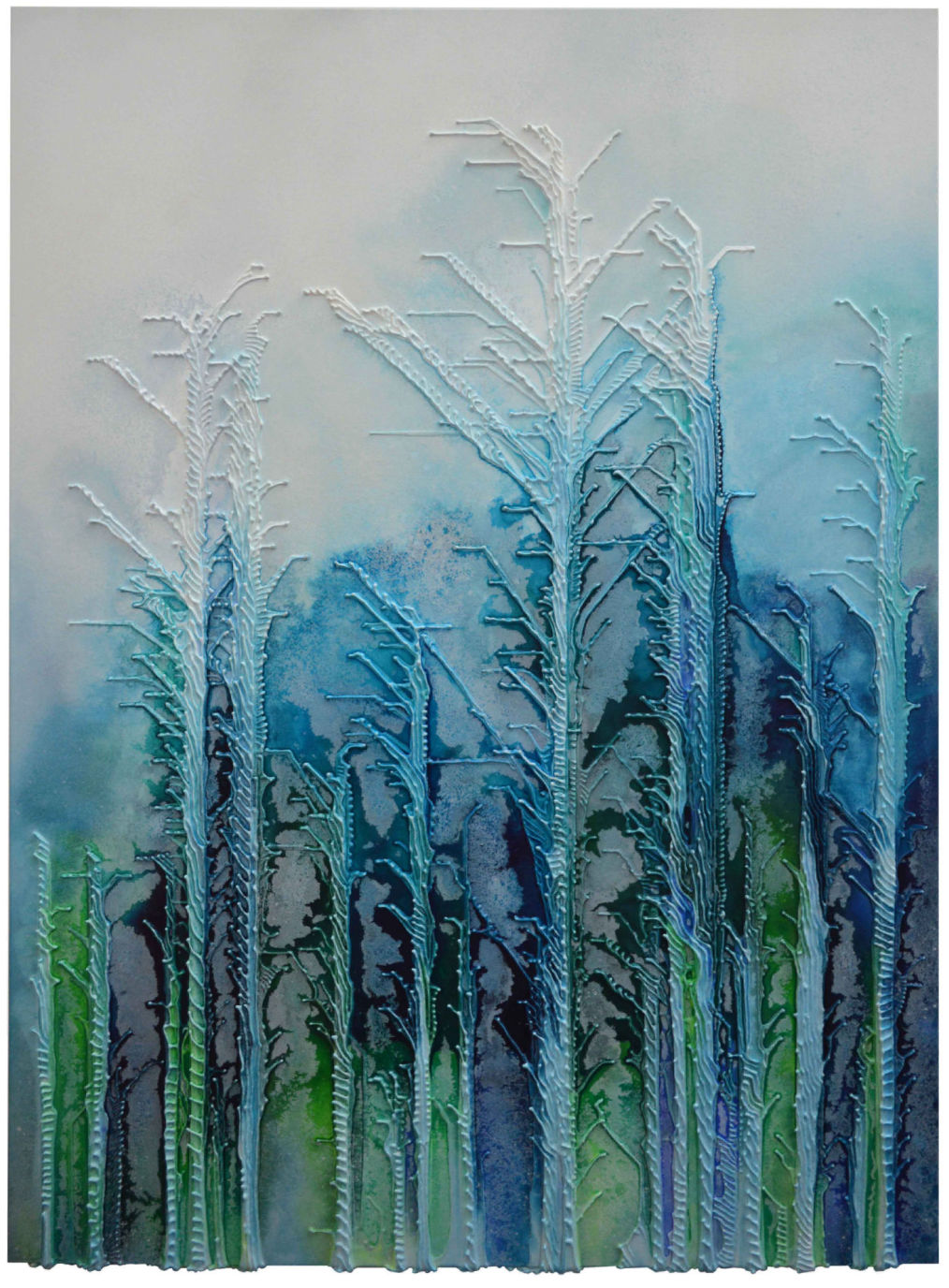
The paintings and delicate colored structures by the Hamburg artist Swen Kählert take the landscape painting genre down surprising paths. He layers paint line by line over the course of months, his hand performing the same movement again and again. In this way he gradually creates organic, abstract structures in which the color becomes the form and the material becomes the content. The resulting structures are reminiscent of something seemingly familiar, arouse associations with parts of the landscape, coral reefs, rock structures or dune formations viewed from above - and yet remain abstract. The strange familiarity that emanates from these works is due to their creation process, because the artist uses the principles of natural growth, which he transforms and makes fruitful for art.
“The principle of nature is a role model for us and shows us that one thing builds on another,” says Swen Kählert. However, instead of creating an image of the world in terms of appearances, he exposes the patterns behind all things, the fundamental structures that are constantly repeated on both a small and a large scale. One could call his art structuralist landscape painting, which is ultimately made up of color in the object itself and transfers the painterly into the third dimension. “Creation or reflection here is not a faithful “imprint” of the world, but rather the real creation of a world that is similar to the first, but does not want to copy it, but rather make it understandable,” the French philosopher Roland Barthes once formulated with regard to his variant of structuralism. He could have used it to describe the work of Swen Kählert. With his color landscapes, the artist embarks on a journey of research that looks at nature as the foundation of our existence from a perspective that brings out the essence of things. Artificially created micro-landscapes provide insights into the world as such; art becomes a model and at the same time refers to the aesthetics that already underlie nature and are increasingly emphasized in the work of art through the accentuation.
Just as in nature, chance also plays an essential role in Swen Kählert's art. The artist lays the foundation of the work, works successively and yet cannot completely influence the result. Controlled chance explains the vitality of the works - in his publication Chance and Necessity, Monod claims that all life is based on chance and that "chance alone underlies every innovation, every creation in living nature." In Swen Kählert's works, nature and art merge in a fascinating way and show that the topic of landscape painting is far from being thought through.
Anne Simone Kiesiel
______________________
Roland Barthes: The Structuralist Activity, in: Kursbuch 5, May 1966, pp. 190-196. Roland Barthes here describes his version of structuralism. The term structuralism itself refers to methods that examine structures and relationships in cultural symbolic systems.
Jacques Monod, Chance and Necessity: Philosophical Questions of Modern Biology, Munich 1975, p. 108.